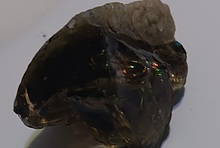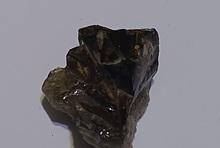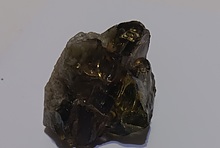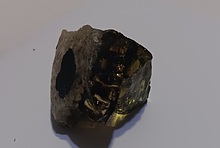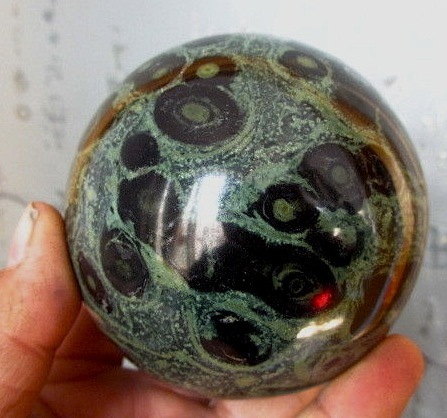Home PageAbout MindatThe Mindat ManualHistory of MindatCopyright StatusWho We AreContact UsAdvertise on Mindat
Donate to MindatCorporate SponsorshipSponsor a PageSponsored PagesMindat AdvertisersAdvertise on Mindat
Learning CenterWhat is a mineral?The most common minerals on earthInformation for EducatorsMindat ArticlesThe ElementsThe Rock H. Currier Digital LibraryGeologic Time
Minerals by PropertiesMinerals by ChemistryAdvanced Locality SearchRandom MineralRandom LocalitySearch by minIDLocalities Near MeSearch ArticlesSearch GlossaryMore Search Options
The Mindat ManualAdd a New PhotoRate PhotosLocality Edit ReportCoordinate Completion ReportAdd Glossary Item
Mining CompaniesStatisticsUsersMineral MuseumsClubs & OrganizationsMineral Shows & EventsThe Mindat DirectoryDevice SettingsThe Mineral Quiz
Photo SearchPhoto GalleriesSearch by ColorNew Photos TodayNew Photos YesterdayMembers' Photo GalleriesPast Photo of the Day GalleryPhotography
╳Discussions
💬 Home🔎 Search📅 LatestGroups
EducationOpen discussion area.Fakes & FraudsOpen discussion area.Field CollectingOpen discussion area.FossilsOpen discussion area.Gems and GemologyOpen discussion area.GeneralOpen discussion area.How to ContributeOpen discussion area.Identity HelpOpen discussion area.Improving Mindat.orgOpen discussion area.LocalitiesOpen discussion area.Lost and Stolen SpecimensOpen discussion area.MarketplaceOpen discussion area.MeteoritesOpen discussion area.Mindat ProductsOpen discussion area.Mineral ExchangesOpen discussion area.Mineral PhotographyOpen discussion area.Mineral ShowsOpen discussion area.Mineralogical ClassificationOpen discussion area.Mineralogy CourseOpen discussion area.MineralsOpen discussion area.Minerals and MuseumsOpen discussion area.PhotosOpen discussion area.Techniques for CollectorsOpen discussion area.The Rock H. Currier Digital LibraryOpen discussion area.UV MineralsOpen discussion area.Recent Images in Discussions
Fakes & FraudsRe: misinformation on Kambaba Jasper and Nebula Stone(TM)

14th Jan 2008 18:31 UTCRon Nurnberg
(Kambamba/Kambaba/Kabamba/Kabamby/Cumbamba)
Caution to Mineral collectors and the Esoteric Community
Some unscrupulous sellers make up new names for well known stones and crystals in order to sell them to an unsuspecting public.
Please be aware that these type of people are out there.
There are companies that are trying to capitalize on the popularity of our stones' Name (Nebula Stone) because they have learned it has become very popular around the World. Some unethical companies have intentionally sold Kambaba/Kambamba/Kabamba Jasper/Crocodile rock from Madagascar and South Africa falsely calling them Nebula Stone. Kambaba Jasper is not Nebula Stone.
They are two totally different stones.
Nebula Stone is an igneous stone (from within the Earth). Kambaba jasper is a sedimentary stone of fossilized algae.
Kambaba Jasper is sometimes falsely sold as Nebula Stone by those who either have wrong information or are being unscrupulous.
Some companies have bought Kambaba/Crocodile rock (fossilized stromatolite algae) from Madagascar and falsely pretend that Kambaba had the same mineral composition as Nebula Stone, and therefore giving the false impression that supposedly they had the same energy. That is a scientific impossibility.
They are geologically and mineralogically totally different stones.
Kambaba Jasper does not have the same mineral composition as Nebula Stone. Kambaba Jasper does not have the same atomic and molecular energies as Nebula Stone.
The atoms of all substances are in constant motion. The intensity of atomic or molecular movement is a measure of the energy content of a piece of matter. A body that has a high intensity of atomic or molecular movement will transfer energy to an adjacent body with a lower intensity of movement by the energy conversion process of conduction.
The molecular movement of atoms in an igneous stone and a sedimentary stone are NOT the same.
Different vibration and movement of the atoms and molecules within a different substance resonate differently and have different energetic qualities.
The molecular movement of atoms in Nebula Stone and the molecular movements of atoms in Kambaba Jasper have very different energies, and of course, are as vastly different as their different origins.
It would be unrealistic for anyone to believe that Nebula Stone which is a igneous stone, and Kambaba Jasper which is a sedimentary stone, could have the same atomic and molecular energy.
That is a scientific impossibility. It is a matter of simple physics.
It is the minerals and their unique combination and the formation process that dictate the atomic and molecular movement in a stone (in essence the energy).
Kambaba Jasper can be an attractive fossil. The main point is that the different minerals and combinations and how they were created are what created the vastly different energies (atomic and molecular movement and the piezoelectric effect).
Kambaba Jasper is a stromatolite which is a clump of fossilized algae ( greenish or blackish orbs of petrified algae with predominantly black centers), whereas Nebula Stone was created from an entirely different evolutionary geologic process. Nebula Stone is composed of a unique combination of crystallized minerals from deep within our planet (igneous). Some of these companies selling Kambamba Jasper are even using variations of our name to try to deceive the unsuspecting public. They have ranged from Eldarit-Nebula-Kambamba, Nebulastein, Nebulastone, Nebula, Nebular, Nebula Jade, Nebulastein-Eldarit, Eldarit, Nebula Stone, Nebulastone Eldarit Kambaba, Nebelfleck-stein and other combinations.
This, of course, leaves us more than slightly miffed. So we felt an explanation of the difference between Nebula Stone and Kambaba was needed.
Kambaba jasper is an algae (a stromatolite - a clump of algae) that fossilized over time turning the algae into stromatolite Jasper. Stromatolite Kambaba Jasper is from the South Africa Rift that runs from South Africa to Madagascar an island nation off the east coast of Africa. Stromatolite Kambaba Jasper is a sedimentary (deposited layers of sediment) fossil of algae from long ago. Whatever names they use Kambaba Jasper is still Kambaba Jasper... a sedimentary fossilized algae. Kambaba is usually colored bluish-gray-green with dark and greenish orbs.
Nebula Stone is NOT a fossilized algae. Nebula Stone is of igneous origin (from within the Earth). Nebula Stone is NOT from South Africa nor Madagascar. Nebula Stone is from only one location on the planet...North America.
Nebula Stone is an igneous stone, whereas Kambaba is a fossilized sedimentary stone.
Kambaba and Nebula Stone are formed by different formation processes, come from different locations on Earth and contain different mineral compositions and color combinations and different atomic and molecular energies.
They are geologically and mineralogically totally different stones.
Nebula Stone is of igneous origin (from within the Earth) and brought to the surface by Volcanic processes. Nebula stone is a "unique combination of discrete crystallized minerals". There is no other Gemstone with the same combination of minerals.
One can easily see the difference
Nebula Stone
When we discovered Nebula Stone in 1994 we sent samples to Dr. Leslie Hale with the Smithsonian Institution, Dr. George with The American Museum of Natural History, Dr. Sid Williams of Globo De Plomo, Dr. Dave Douglas researcher UCLA, Dr. Vergil Leuth with New Mexico School of Mines, Dr. Bruce Geller of Geo Concepts Unlimited Bolder Colorado (Melody's mineralologist) and others. Nebula Stone was analyzed using X-ray Dispersion Analysis (EDX) in a Scanning Electron Microscope (Microprobe/SEM), Polished Section Analysis, XES Elemental Analysis, XES Search (@1/4), Digital Imaging, Photomicrographs, Back-Scattered Electron Detector (BSE), Petrographic Analysis and X-ray Diffraction and the Electron Microprobe.
The Nebula Stone description below is from the World renowned mineralogical Petrologist Dr. Sid Williams.
"The technical description of the Nebula Stone may not be much fun to read but at least it would be familiar to a professional geologist if it were in your interest to use it in that manner. In plain English stripped of jargon it means that this stone is a fresh and unusual alkalic volcanic rock composed of the minerals Quartz, Anorthoclase, Riebeckite, Aegirine, Arfedsonite and Zircon. Quartz and Anorthoclase form the groundmass of the gem, while Riebeckite and Aegirine are an integral part of the spherulites. The darker matrix is richer in Riebeckite and also contains more Quartz and Anorthoclase. The light green spherules you see in the stone composed of radiating fibers are riebeckite needles mantled with fine grained Aegirine."
"This stone evolved from inside the Earth with it's discrete rare combination of minerals cooling and crystallizing forming as a glassy unit that devitrified slowly under quiescent conditions. Spherulitic structures began to develop in the glass by virtue of devitrification while other portions of the glass residium remained slightly mobile, showing streaky structure around those domains in an advanced state of crystallization. Ultimately the glass base also devitrified under static conditions. This has produced a matrix of Quartz and Anorthoclase which occur in complex intergrowth. typically the Anorthoclase is present as slender lath-like crystals or feathery club-shaped prisms (points) floating in an interstitial filigree of Quartz. Within spherulites Anorthoclase is predominant and there is less Quartz for it appears to have segregated from these domains during crystallization."
"Lying side by side with the anorthoclase laths are slender prisms (points) of Riebeckite which may attain considerable length and yet never exceed 10 or 12u in width. The matrix of the stone contains considerably more clear Quartz-rich vein-forms and in places it has grown nearly at the exclusion of Anorthoclase. However, needles of Riebeckite still lie within these minerals and their common orientation is suggestive of flow banding around spherulites. Granular Aegirine occurs in the matrix where it appears to have replaced or supplanted Riebeckite almost entirely and the largest grains occur in late magmatic vein-forms carrying clear granular Quartz. Aegirine occurs within spherulites and it lies side by side with Riebeckite needles and appears to replace their margins."
"What this means is that the minerals were once molten and glass-like but cooled very slowly, allowing the discrete minerals to begin to separate out and crystallize so the final product had lost its glass-like condition. This allowed the green Nebula eyes (orbicules or spherulites) to form as the different component minerals cooled and crystallized at various rates. It is these spherulites of discrete minerals which give the cosmic night sky-like appearance to Nebula Stone. With numerous microscopic terminated quartz prisms (points) in the Quartz-rich vein-forms". Nebula Stone is deep deep green, almost black looking, with crystallized green eyes or Spherulites. The Spherulites (green eyes) are crystals composed of Anorthoclase, Riebeckite and Aegirine crystals."
The photo below is of a Genuine Nebula Stone Frog Carving
The photo above is an example of a Genuine Nebula Stone Frog Carving.
We have learned that there is some confusion about what really is authentic genuine Nebula Stone. The pictures below will make it clear.
We are the origin of all Nebula Stone, anyone that is selling Genuine Nebula Stone first received it from us or someone that we have sold Nebula Stone to.
If you want Kambaba then please ask the store for Kambaba and if you desire Nebula Stone then please ask the store for genuine Nebula Stone... but don't let the stores sell you a misrepresented stone. The store owner may not know the difference so please help them by emailing them this link: Kambaba Jasper is fossilized stromatolite algae You may post this link on your web site.
From Karen and Ron the discoverers, the origin and only Direct Source of Genuine Nebula Stone Spheres, Nebula Stone Skulls, Jewelry, Carvings and Nebula Stone Tumble Stones, all things Nebula Stone.
-------------------------------------------------------------------------------------------------------------------------
? What is Kambaba Jasper ?
Kambamba/Kambaba/Kabamba/Kabamby/Cumbamba
It has been sold under many different misleading names.
KAMBABA JASPER is a sedimentary stone that is FOSSILIZED BLUE GREEN ALGAE (prokaryotic bacteria).
Kambaba Jasper is simply a newly invented name for "Green Stromatolite Jasper" a sedimentary stone that has been around for a long time. Most mineralogists know it as "Green Stromatolite Jasper" a fossilized algae.
Some wholesalers have recently renamed "Green Stromatolite Jasper" to "Stromatolite Kambaba Jasper"
And now "Stromatolite Kambaba Jasper" or "Kambaba Jasper stromatolite" has again been recently renamed by wholesalers in South Africa and Madagascar as "Kambaba Jasper" to deceive the public into believing it is a new find. It is not a new find. It is a newly found formation of green stromatolite jasper. It is not a new stone. It is the same "Green Stromatolite Jasper" (a fossilized algae) that comes in many variations. The Kambaba variations falsely being sold under it's many different copy cat names primarily comes from the South African Rift.
Kambaba jasper is a fossilized blue-green algae sedimentary stone, an algae plant with sand and debris that has been fossilized.
There are wholesalers that are now once again deceiving the retailers, public, metaphysical and mineralogical communities by once again falsely renaming "Kambaba Jasper" to... Nebula Stone, Eldarit, Nebulastone, Nebular stone, Eldarit Nebulastone Kambaba.
The Kambaba sphere and the Kambaba heart and cabochon (shown above on the left) are sedimentary biological fossils of bioorganic origin (stromatolite) from the South African Rift formation.
Kambaba jasper is a fossilized algae sedimentary stone. Nebula Stone is an igneous stone of crystallized minerals.
Nebula Stone evolved from inside the earth (igneous) and was" brought to the surface by Volcanic processes with it's discrete rare combination of minerals cooling and crystallizing forming green filaments of minerals radiating from the nucleus of the eyes (spherulites)".
The spots in Kambaba are usually rings of fossilized algae. The fossilizing process creates the patterns and irregular shaped orbs. Kambaba Jasper's orbs are algae squished by layers of sand and debris cemented layer upon layer over time forming some of the irregular shaped orbs.
The eyes in Nebula Stone are crystallized minerals of Anorthoclase and Riebeckite points mantled with fine grained Aegirine crystals radiating outwards from the nucleus then flowing back inwards to the Quartz, Anorthoclase and Riebeckite matrix of Nebula Stone.
Kambaba jasper is usually NOT a dark background (Matrix). The base color of Kambaba is usually "bluish-gray-green with mottled algae patterns of black specks with black swirls and sometimes green algae spots with less black, but the base (background color) of kambaba is usually lighter bluish-gray-green."
Nebula Stone is a deep green (almost black) matrix. The base color of Nebula Stone "is a deep, deep green appearing almost as black as the night sky with magmatic clear Quartz-rich vein-forms carrying clear granular Quartz throughout the matrix with microscopic prisms (points) in the self healed veins of Quartz."
Different vibration and movement of the atoms and molecules within a different substance resonate differently and have different energetic qualities. The molecular movement of atoms in Nebula Stone and the molecular movements of atoms in Kambaba Jasper are different and have very different atomic energies, that of course, are as vastly different as their different origins.
Stromatolite Kambaba Jasper (now being sold as Kambaba Jasper and some other copy-cat misleading names) has different variations of bluish-green to bluish gray to black stromatolite spots marked by fossilized ‘biomass’ structures. Stromatolites contain rudimentary algae fossils and are known to be among the plants that contributed to the production of oxygen in the early atmosphere of earth. Stromatolite Kambaba Jasper contains evidence of the planet’s sedimentary and biological activity over many thousands of years. Kambaba jasper is sedimentary fossilized blue-green algae (prokaryotic bacteria) that grew and fossilized into clumps called Stromatolites. It derives its bluish-green with mottled patterns of black specks with black swirls and spotty patterns from fossilized algae colonies that once lived 22 million years ago.
Precambrian stromatolite is the oldest of all fossils, The banding that commonly appears in stromatolite is a record of the growth patterns of colonies of microorganisms, principally photosynthetic cyanobacteria, but also other Eubacteria and the Archaeans. The colors that are often expressed are the result of the interaction of biological and sedimentary processes, together with subsequent chemistry and mineral exchange. Stromatolites are most often described as biogenically-produced structures formed by colonies of photosynthesizing cyanobacteria (blue green algae).
During Precambrian times, bacterial mats formed a platform for trapping and cementation of sediment. For photosynthetic bacteria, depletion of carbon dioxide in the surrounding water could cause precipitation of calcium carbonate that along with grains of sediment were then trapped within the sticky layers of mucilage (that formed a film for UV protection) that surrounded the bacterial colonies. Cyanobacteria are also capable of directly precipitating calcium carbonate, with minimal incorporation of sediment within the structure. The bacteria could repeatedly re-colonize the growing hard sedimentary platform, forming layer upon layer in a cyclic repetitive process. The resulting successive layering can assume a myriad of shapes dependent upon microorganism and environment, and if left undisturbed by forces of nature could form huge domes and flat laminar structures that grew upward toward the life-sustaining rays of the sun.
Cyanobacteria are found to be a primary organism in the formation of microbial carbonates. Prokaryotic bacteria is blue-green algae owning to it's pigmentation involved in photosynthesis.
Kambaba jasper is commonly formed by the trapping, binding, and cementation of sedimentary grains by microorganisms, especially blue-green algae.
You may send this information page to others and add to your web site or eBay store. ____________________________________________________________________________________________________________
If you want Kambaba Jasper then please ask the store for Kambaba Jasper and if you desire Nebula Stone then please ask the store for genuine Nebula Stone... but don't let the stores sell you a misrepresented stone. The store owner or web master may not know the difference so please help them by emailing them the link to this page: Kambaba Jasper is fossilized stromatolite algae you may copy and past this link to email to others. Kambaba Jasper German (Deutsch) translation
Kind Regards
Karen and Ron

16th Jan 2008 01:42 UTCWynne
True, that is a scientific impossibility. Neither has the 'same energy' in a 'metaphysical' sense as there is no such thing.

17th Jan 2008 18:52 UTCTed Kepling
17th Jan 2008 20:35 UTCJolyon Ralph Founder
But I left it (once I edited out the unwelcome advertising and trademark symbols) as it contains some laughable comments that should amuse you all!
====
"It would be unrealistic for anyone to believe that Nebula Stone which is a igneous stone, and Kambaba Jasper which is a sedimentary stone, could have the same atomic and molecular energy.
That is a scientific impossibility. It is a matter of simple physics. energies, and of course, are as vastly different as their different origins."
Perhaps you would like to explain the physics involved in this. What are these 'molecular energies' you talk about. What you seem to be unaware of is that most sedimentary rock is made from mineral particles ground down from previous igneous rocks. There's no difference at the molecular level. A grain of quartz is quartz whether it's from igneous or sedimentary rock. It's the same.
====
"It derives its bluish-green with mottled patterns of black specks with black swirls and spotty patterns from fossilized algae colonies that once lived 22 million years ago."
Well, your geological timescale is a bit out of sync too. Precambrian rocks are at least 542 million years old, and up to about 4 billion.
So... If you want to protect the use of the name you created then it doesn't do you any good here (or legally, for that matter) to fill your statement in defence of the name with such nonsense.
If this thread gets out of hand it will be deleted.
Jolyon

17th Jan 2008 20:54 UTCAlfredo Petrov Manager
17th Jan 2008 20:58 UTCJolyon Ralph Founder
Oh well...
Jolyon
18th Jan 2008 09:36 UTCUwe Kolitsch Manager

16th Apr 2011 11:34 UTCJackie Younghusband
Kambaba Jasper, green stromatolite jasper - what is its structure and geology? I sell crystals and minerals and I try to give my customers correct facts. I have just received some very pretty tumbles of this stone. I am finding it very difficult to get any scientific information although the web is full of metaphysical information. When I look at photos of fossil stromatolites, they do not look anything like this stone. So what is it ? Please help.
Jackie Younghusband
18th Apr 2011 11:47 UTCRock Currier Expert
You will at least have to post some pictures of what you wish comments on. We can't read your mind.

10th Apr 2012 21:59 UTCElysia
Rock Courier - you don't have to be a mind reader to know what stone she's talking about, you only need to type two words into Google to see many, many examples of the stone. Here's one link:
http://www.theimage.com/newgems/quartz/jasper/index.html
It says: "More recently and currently the best known orb jaspers are coming from Madagascar, Kambaba and Ocean Jasper."
Another link says: "Kambaba jasper is known to be over 2,200 MILLION YEARS OLD
Kambaba Jasper / Stromatolite is an orbicular sedimentary fossil. 3.5 T0 1.5 billion years old." http://www.cs.mun.ca/~zubayer/myhome/fossil.htm
Another source says its color comes from blue-green algae, which I find hard to believe - it would have retained its color as a fossil? I am more inclined to believe that its coloration comes from its original sedimentary constituents. But I would like to hear what a real gemologist or mineralogist has to say about this, and it's currently not listed in mindat's mineral database.
More pics if you need them: https://www.google.com/search?tbm=isch&hl=en&source=hp&biw=1187&bih=805&q=kambaba&gbv=2&oq=kambaba&aq=f&aqi=g2g-S7g-mS1&aql=&gs_l=img.3..0l2j0i24l7j0i5i24.851l1918l0l2294l7l7l0l0l0l0l72l484l7l7l0.frgbld.
Please help if you can. Thanks!

10th Apr 2012 22:41 UTCAlfredo Petrov Manager
It isn't necessary to have the name "Kambaba jasper" on Mindat because it isn't a well-defined mineralogical or geological term, just a trade name some seller made up. Eventually someone may get around to giving it its own Mindat page, but it won't be a high priority.
I'm not sure why sellers like to emphasize in capital letters how a rock is billions of years old, as if that gave it added value. After all, very extensive regions of Canada, Greenland, Australia, Africa, India, Brazil are completely covered with rocks that are billions of years old, so it's not as if rocks of that age are ever going to be scarce :-)

11th Apr 2012 19:41 UTCElysia

3rd Jan 2014 12:09 UTCPharos
happy new year 2014.
I want a precambrian stromatolite. Is kambaba jasper is a precambrian stone ?
do we know where in madagascar this stone come from ?

23rd Feb 2014 00:35 UTCTom Kapitany
Not of organic origin
That is also incorrect

2nd Apr 2014 09:20 UTCRob van der Hoeden
The following small article by Bernhard Bruder of German EPI (Institut für Edelsteinprüfung, i.e. Institute for testing gemstones) clarifies a lot, link:
http://www.epigem.de/index.php/informationen/neue-schmucksteine/75-nebulastone-kabamba-eldarit.html.
Seit einigen Jahren werden in Deutschland unter dem Namen Eldarit zwei Gesteine angeboten, die sich optisch deutlich unterscheiden. Die erste Variante kommt aus Mexiko und besteht aus einem (fast) schwarzen Gestein mit grünen Punkten und Kreisen (A). Da sich manche Menschen beim Anblick dieses Gesteines an Galaxien oder Sternnebel im Weltall erinnert fühlten, erhilt es in den USA den Handelsnamen "Nebula-Stone".
Dünnschliff- und Mikrosondenanalysen zeigten, dass das Gestein aus einer dunklen Matrix aus Quarz und Alkalifeldspat (Anorthoklas) besteht. Darin eingebettet finden sich radialstrahlig angeordnete, hellgrüne Amphibol-Aggregate (Riebeckit bis Arfvedsonit) die von feinkörnigen Pyroxenen (Aegirin) ummantelt sind. Die Entstehung ist noch nicht völlig geklärt, aber wahrscheinlich handelt es sich um ein vulkanisches Gestein, das durch eine schwache Metamorphose überprägt wurde. Eldarit in der beschriebenen Ausbildung wird den USA häufig, in Deutschland nur sehr selten gehandelt.
In Deutschland bekommt man unter diesem Namen fast immer ein Gestein angeboten, dessen Farbverteilung genau umgekehrt ist wie beim mexikanischen Eldarit. Dieses Gestein kommt aus Madagaskar und wird auch als Kabamba- (Synonyme: Kambamb-a oder Kambaba-) -"Jaspis" bezeichnet (B). Die von verschiedenen Firmen in Madagaskar und den USA vertretene Meinung, er bestehe aus fossilen Stromatolithen Algen, ist definitiv falsch.
Dünnschliff- und Röntgendiffraktionsanalysen des EPI-Instituts haben ergeben, dass es sich keinesfalls um eine Art von Jaspis, sondern um ein vulkanisches Gestein handelt. In der grünen Grundmasse aus Quarz, Pyroxen (Aegirin), sowie Natron- und Kalifeldspäten sind kreisförmig bis schlierig verteilte schwarze Aggregate aus winzigsten Amphibol- Nädelchen (Riebeckit bis Pargasit) eingebettet.
Im Mineralbestand sind sich die beiden Gesteine demnach sehr ähnlich. Sie unterscheiden sich vor allem in der Menge der einzelnen Mineralien, ihrer Verteilung und eventuell auch der Art des Ausgangsgesteins. Aus mineralogischer Sicht sind beide Gesteine jedoch so ähnlich, dass die Handelsnamen Eldarit und Kabamba als gleichwertige Synonyme akzeptiert werden können. Da in keiner der untersuchten Proben Jaspis nachgewiesen werden konnte, sollte der Ausdruck "Kabamba-Jaspis" jedoch unbedingt vermieden und durch den Begriff "Kabamba-Stein" ersetzt werden.
Detaillierte Informationen zu diesem prägnanten Gestein finden Sie in unserem Newsletter-Archiv.
2nd Apr 2014 12:53 UTCUwe Kolitsch Manager
2nd Apr 2014 13:17 UTCJolyon Ralph Founder
Jolyon

2nd Apr 2014 17:14 UTCDoug Daniels

15th Apr 2014 00:27 UTCBruce F.
15th Apr 2014 10:07 UTCRock Currier Expert
There is no agreed upon definition for either of the stones except what the seller calls them. These things are rocks which have complex structures of more than one mineral. I don't think anyone has gone to the trouble to characterize them carefully and until this has been done, test to determine if another specimens of the same material is equivalent to the tested sample can not be made with any assurance. These are made up names by people looking to commercialize and their names have no origins in the scientific literature that I know of.

16th Apr 2014 09:17 UTCBruce F.
28th Apr 2014 21:20 UTCKristi Hugs

4th Jun 2015 15:15 UTCDan Damrow

21st Nov 2015 20:10 UTCCW Rose
26th Nov 2015 19:35 UTCOwen Melfyn Lewis
Now I have this energetic pet rock that I have named the Tantric Stone. My girlfriend loves its powers! She says its the riebeckite in it that really does it for her.
Only we have the real, true, energetic Tantric Stone. Do not be fooled by others using our name. They are crooks and charlatans who lie in their teeth and would steal from the grandmothers.
I remain, Sir,
Your humble and obedient servant,
Etc., etc..
16th Mar 2017 13:42 UTCStone Mania
I'm not interested whether it's the same as Nebula Stone or not, I'm just interested to know what this rock is and what is its correct name?
Thanks.
Feeling confused!

16th Nov 2021 10:42 UTCShaz Perks
Kambaba jasper is a trade name - useful for retail. Originally incorrectly believed to be a jasper, then a stromatolite, the EPI-Institute in Germany has studied the rock and correctly identified its constituents. (Link was shared by Rob in 2014).
Their study concluded that kambaba jasper is a volcanic Rhyolite material. It consists of quartz, aegirine, albite and K feldspar. The dark 'eyes' consist of needles of amphiboles (riebeckite to paragasite in composition).
(This does coincidentally, and ironically, mean that trade name material 'Kambaba Jasper' and trade name material 'Nebula Stone' are in fact geologically and mineralogically the same, which by the OPs definition must then share the same 'nebulous' esoteric/energetic properties, no? ;) To quote the OP "It is a matter of simple physics" lol)
As to its correct label, kambaba jasper is known on the market, and makes for a smaller label than 'volcanic rhyolite consisiting of quartz, aegirine, albite & k feldspar with needles of amphiboles.' Perhaps kambaba rhyolite (which I am going with henceforth) would be a more accurate trade name. Each to their own!
16th Nov 2021 15:12 UTCClosed Account 🌟
Cheers,
Branko




Mindat.org is an outreach project of the Hudson Institute of Mineralogy, a 501(c)(3) not-for-profit organization.
Copyright © mindat.org and the Hudson Institute of Mineralogy 1993-2024, except where stated. Most political location boundaries are © OpenStreetMap contributors. Mindat.org relies on the contributions of thousands of members and supporters. Founded in 2000 by Jolyon Ralph.
Privacy Policy - Terms & Conditions - Contact Us / DMCA issues - Report a bug/vulnerability Current server date and time: April 19, 2024 05:52:48
Copyright © mindat.org and the Hudson Institute of Mineralogy 1993-2024, except where stated. Most political location boundaries are © OpenStreetMap contributors. Mindat.org relies on the contributions of thousands of members and supporters. Founded in 2000 by Jolyon Ralph.
Privacy Policy - Terms & Conditions - Contact Us / DMCA issues - Report a bug/vulnerability Current server date and time: April 19, 2024 05:52:48
